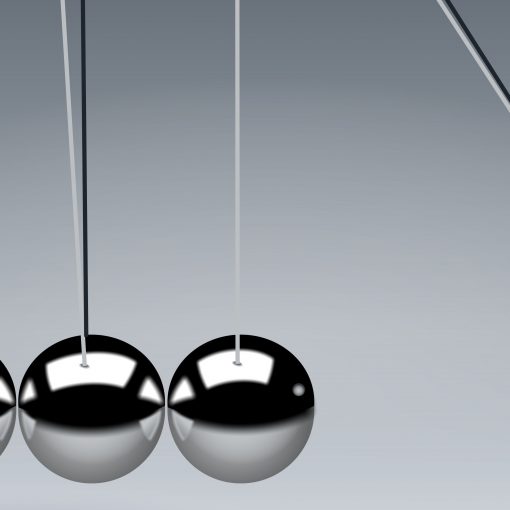THE LEARNING MACHINE
Let me introduce you to the basis of my work. In so doing I am going to talk about idea of you, me and of everyone else, as living within individual "learning machines." More specifically an experiential, and constantly active, learning machine. I emphasize that this is foremost my view of the world.
A recent article on neuroplasticity in the New Scientist highlights this persisting learning capacity that exists throughout our lives. So the good news for those of us that are older in years, it is not the sole privilege of the young.
Learning for life
We are learning all the time. Not just when we pick up the text book, sit behind a piano, or join a group in a seminar room. Nobody tells our unconscious that “now” is the time to learn. Nobody tells the neurons when to fire or the mind to shape a memory or our muscles capture the movement. The learning machine saves us the effort, it quietly does it for us behind the scenes.
In essence, as I like to tell clients we are always practicing something – whether that be a thought, an emotion, a reaction or a behaviour. Most importantly, every time we run the pattern we strengthen the neural pathways which support it. Whether we are doing scales on the piano, complaining about our lot in life, or judging someone else's behaviour, each is a practice. And with each iteration we strengthen the learning.
It is interesting that when we type "learning" into picture library the images are predominantly people sitting down and being "talked to" or sat quietly reading a book. Not many pictures involve activity.
Recognising the machine at work
Recognising the machine means recognising ourselves. It means developing a clean and clear objective awareness of ourselves, our beliefs, our triggers and our behaviours. As well as recognising the effects of these on others around us, including non-human animals and our environment. Organisational psychologist and author Tasha Eurich talks about developing self-awareness as the “21st century challenge". Though this is no new challenge, the reflective insight of the Johari Window has been taught to business leaders for decades, focussing on increasing our awareness of and working with what they called “unseen self".
The key point here is that the more aware of ourselves that we are, the more chance we have to reflect, and so the more potential we have regulate and to effectively influence. In essence to make choices about how we are and what we do. This is where we engage with the machine. It is in the honest reflection of ourselves, and the conscious interaction with the components and technical engineering of that machine.
This engagement is not just about thought it is about action, and action engages our whole-self, more our holistic selves. We call it somatic – a whole body experience – From the Greek soma. Although the word somatic has increasingly been connected with therapeutic practices such as Peter Levine's therapeutic treatment Somatic Awakening there is much more to it. Any change needs our whole-self engaged, we cannot engage part of the learning machine. Change is somatic. The learning machine works on the soma. Somatic learning is experiential, it is working with our experience of action and reaction and growing within this cycle of feedback.
The "whole" and it's memories as behaviour
Neuroscientist Antonio Damasio identifies Descartes Error (in his book of the same name 1994), the false separation of that we have operating under since the 18th Century. Somatic teaching seeks to redress this and works with the active connectivity between mind and body. With a single greater consciousness.
Somatic awareness acknowledges implicit memories which are stored within our bodies, often an emotional memory which might reflect itself in an spontaneous physical response – for example, an often punished child flinching when a hand is raised, regardless of the raiser's intention. (An automatic response often also reflected in the animals who we share our lives with).
Frequently we carry these reactive behaviours through life. And in carrying them forward they can influence future experience and interaction. Childhood necessities playing back as potentially unhelpful behaviour in adult life. For example, a learned behaviour to back down when challenged by our parents, returns when find ourselves unconsciously giving in at work when challenged by colleagues. We are simply running a habit that is as much body as mind.
Too often we do not see the machine at work because, like Plato's music of the spheres, we have lived with it for so long that our conscious mind does not register it.
These processes help us to ride bikes and to play tennis, even such mundane things as getting dressed. We create and then engage the appropriate somatic memories as enablers of action. The problems come when the habits obstruct us – or no longer serve us.
We can engage all sorts of mental planning and reframing but when the obstruction is a somatic memory we will never quite seem to drive change we might seek. As we have proposed, change needs action; sustained change needs practice.
A new programme for the machine
Awareness is an invitation to act.
When we become more aware of our triggers and our subsequent behaviours we change our relationship with them. They cease to be automatic and unreachable. We can engage them, we can own them. Then we have a choice. We can explore and consider their appropriateness, and if necessary seek alternatives.
So how?
One option is to be curious. To turn and face what-ever it is and engage with it. The experiential model (David Kolb, 1984) identifies learning as a cycle of action, reflection and calibration. We learn from the experiential feedback loop. Building experience upon experience, subtly adapting it with each received piece of information.
Alongside this, the act of accepting things as they are and not in the constraints of how we expect them to be, frees us to envision the shift that is needed. From there is the chance to grow. To build upon what we know and shape it to the most appropriate situational state or action.
As we grow there is the developing of a new form or shape, a new feeling, or some new behaviour. A new character which grows from the old. A more appropriate behaviour takes over the role of that which no longer serves us.
With practice we embed and embody
With practice we embed and embody, we become the change that we need.
The key through this is to work with the body. And not just your own. Let the body lead the mind. Our body speaks to us and to others, and theirs to us. We can see people’s impatience when they fiddle with pens as we talk, or we can see their muscles tighten or their skin change colour as we offer difficult conversation. The body is always communicating. And we are often calibrating based on that communication.
Again the body is telling us where we need to look. When we need to pause and be curious. Asking ourselves where that action came from. And so the process continues.
In developing the tools to sharpen awareness we can act on the clues and sign-posts that bodies offer, and in so doing we might open the process and re-write the habitual. What's more science confirms we can. Neuroplasticity proves that change and learning is always an option. We just need the right practice.





2 thoughts on “Life in the Learning Machine”
Just shared your wisdom with the world!!
Thank you for a insightful article!!
I facilitate Equine Assisted Learning so I totally agree with this writing. We have legs so we can move. Movement feeds blood & oxygen to our brain so mind & body works insinc for learning & learning outcomes.